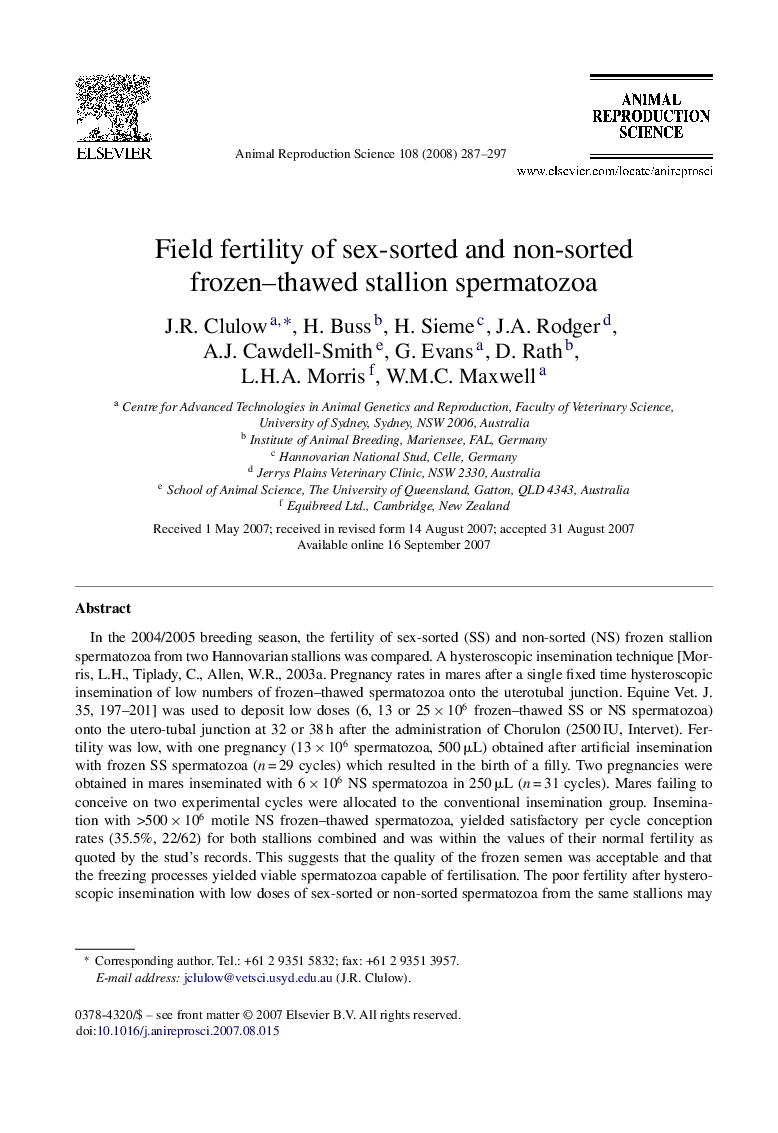| Article ID | Journal | Published Year | Pages | File Type |
|---|---|---|---|---|
| 2074469 | Animal Reproduction Science | 2008 | 11 Pages |
In the 2004/2005 breeding season, the fertility of sex-sorted (SS) and non-sorted (NS) frozen stallion spermatozoa from two Hannovarian stallions was compared. A hysteroscopic insemination technique [Morris, L.H., Tiplady, C., Allen, W.R., 2003a. Pregnancy rates in mares after a single fixed time hysteroscopic insemination of low numbers of frozen–thawed spermatozoa onto the uterotubal junction. Equine Vet. J. 35, 197–201] was used to deposit low doses (6, 13 or 25 × 106 frozen–thawed SS or NS spermatozoa) onto the utero-tubal junction at 32 or 38 h after the administration of Chorulon (2500 IU, Intervet). Fertility was low, with one pregnancy (13 × 106 spermatozoa, 500 μL) obtained after artificial insemination with frozen SS spermatozoa (n = 29 cycles) which resulted in the birth of a filly. Two pregnancies were obtained in mares inseminated with 6 × 106 NS spermatozoa in 250 μL (n = 31 cycles). Mares failing to conceive on two experimental cycles were allocated to the conventional insemination group. Insemination with >500 × 106 motile NS frozen–thawed spermatozoa, yielded satisfactory per cycle conception rates (35.5%, 22/62) for both stallions combined and was within the values of their normal fertility as quoted by the stud's records. This suggests that the quality of the frozen semen was acceptable and that the freezing processes yielded viable spermatozoa capable of fertilisation. The poor fertility after hysteroscopic insemination with low doses of sex-sorted or non-sorted spermatozoa from the same stallions may be directly attributable to the low dose insemination conditions with frozen–thawed rather than sex-sorted spermatozoa.
